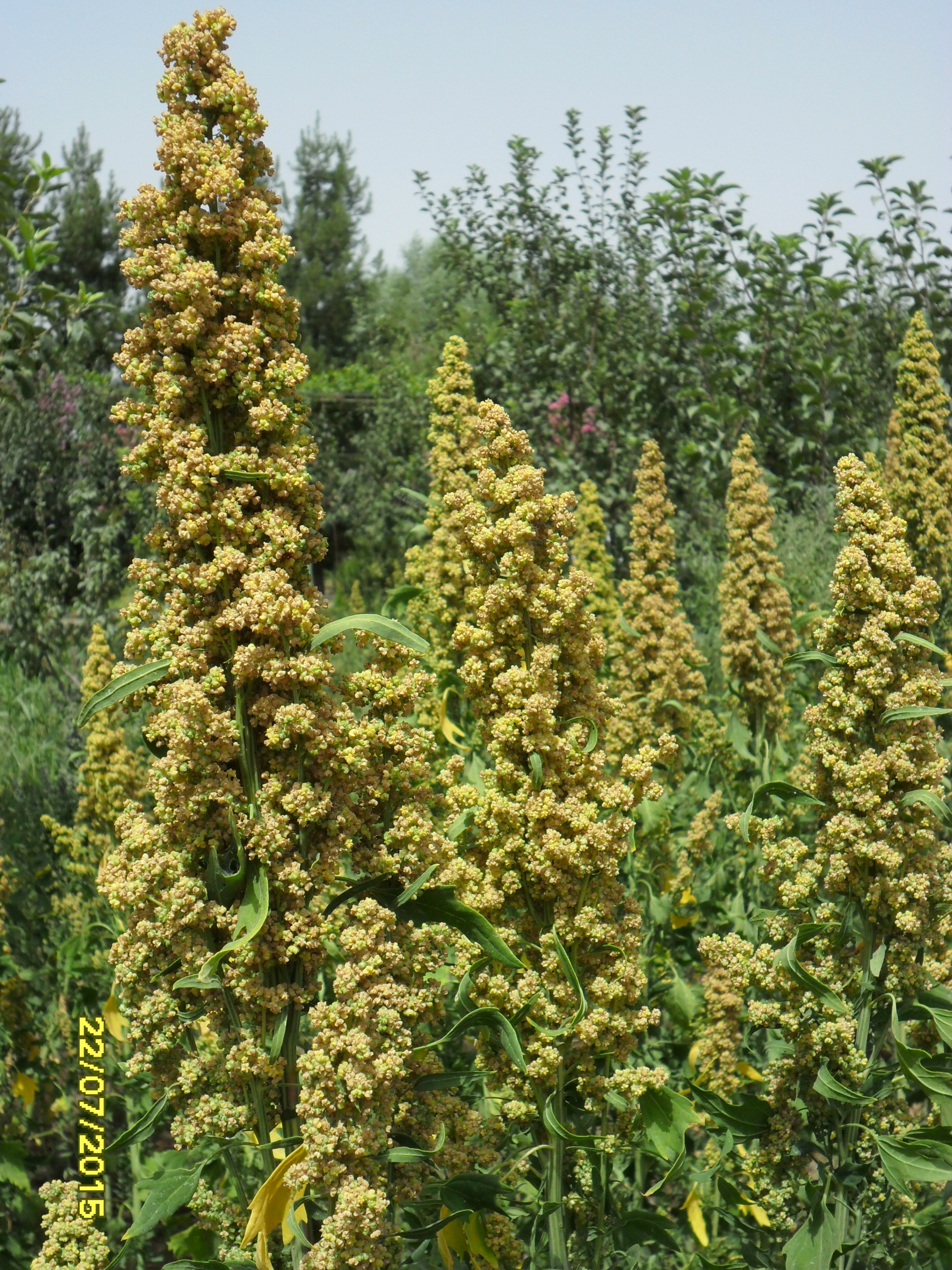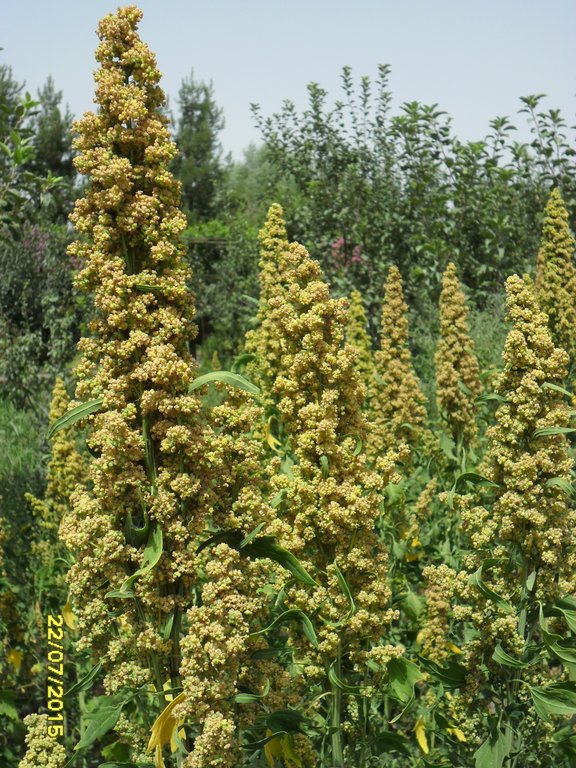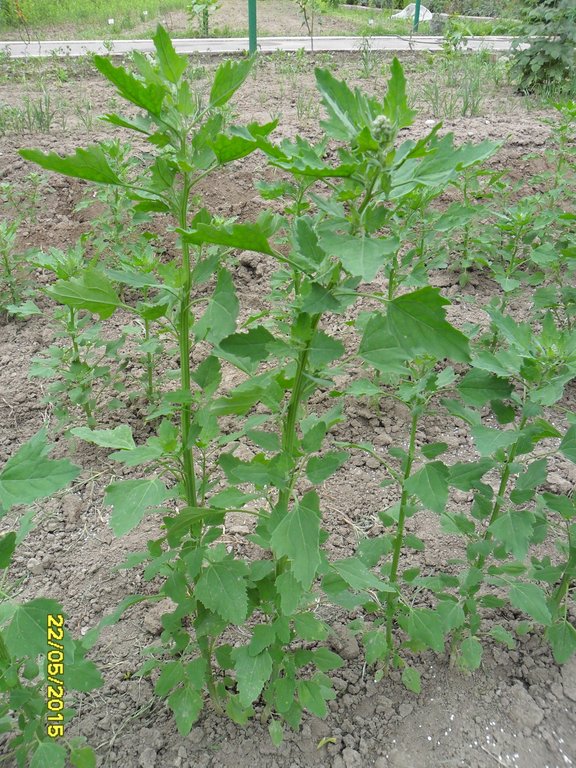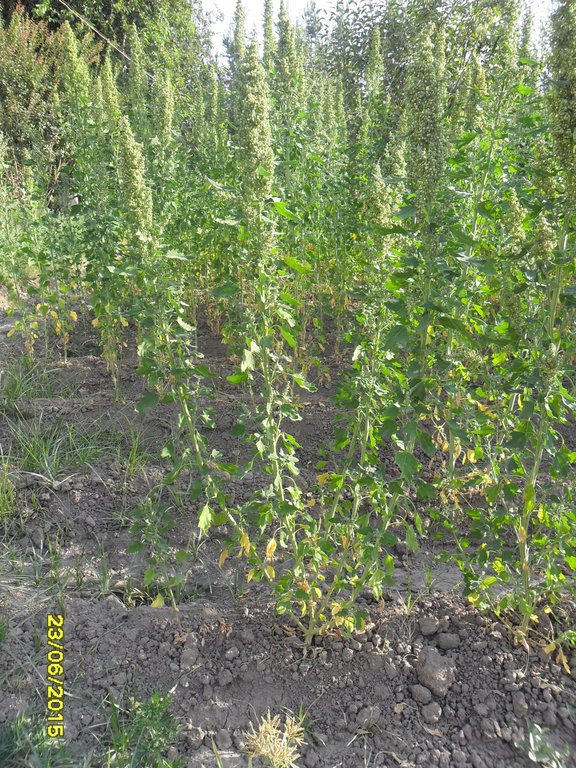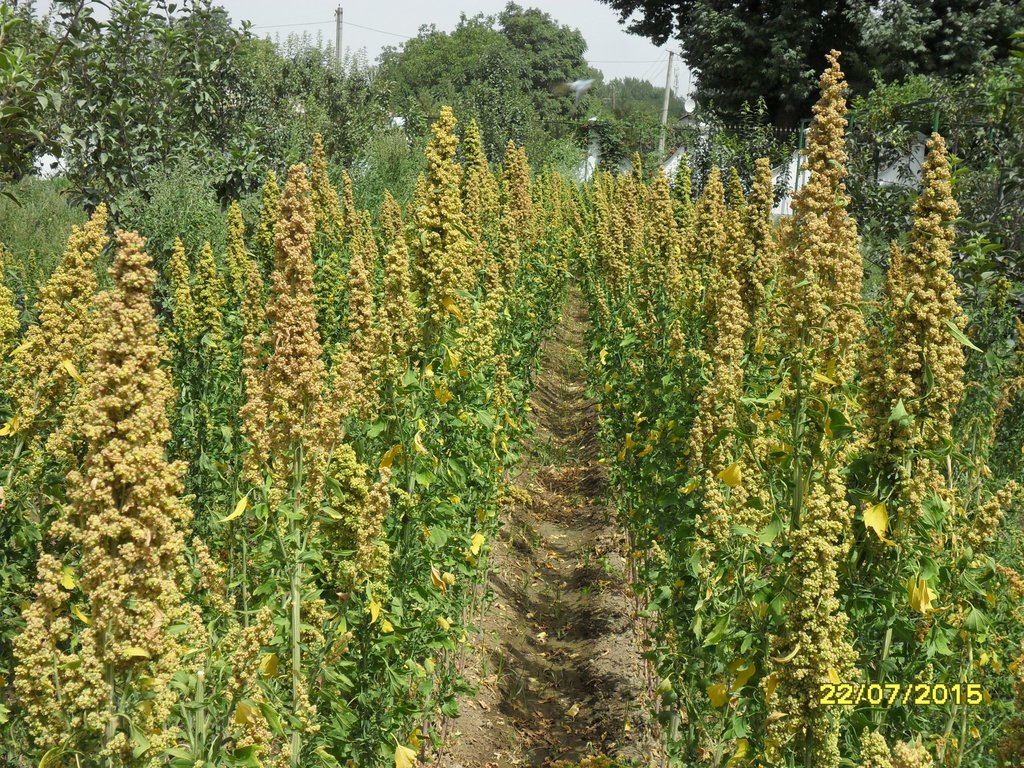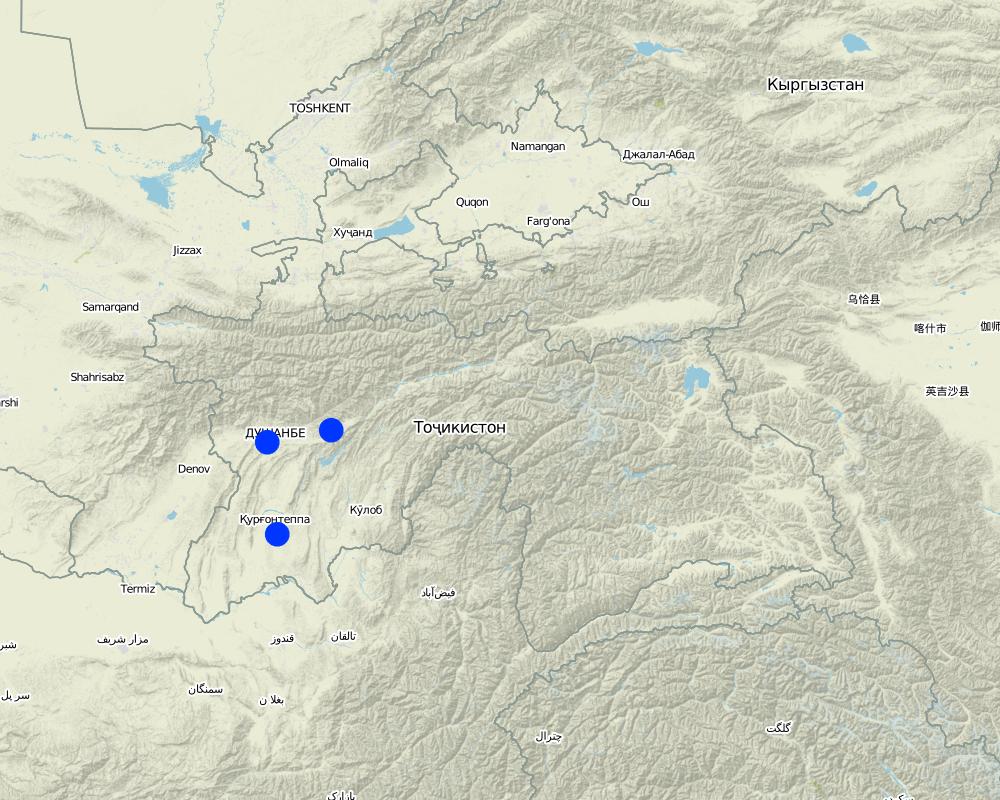This is an outdated, inactive version of this case.
Go to the current version.
Technologies
Inactive
Обеспечение продовольственной безопасности в маргинальных почвенно-климатических условиях , через выращивание многоцелевой культуры Квиноя (Лебеда). [Таджикистан] [Tajikistan]
- Creation:
- Update:
- Compiler: Gulniso Nekushoeva
- Editor: –
- Reviewer: Farrukh Nazarmavloev
technologies_3655 - Tajikistan
- Full summary as PDF
- Full summary as PDF for print
- Full summary in the browser
- Full summary (unformatted)
- Обеспечение продовольственной безопасности в маргинальных почвенно-климатических условиях , через выращивание многоцелевой культуры Квиноя (Лебеда). [Таджикистан]: May 22, 2018 (inactive)
- Обеспечение продовольственной безопасности в маргинальных почвенно-климатических условиях , через выращивание многоцелевой культуры Квиноя (Лебеда). [Таджикистан]: Aug. 20, 2019 (public)
View sections
Expand all Collapse all
Completeness: 76%
1. General information
1.2 Contact details of resource persons and institutions involved in the assessment and documentation of the Technology
Key resource person(s)
SLM specialist:
Tajikistan
SLM specialist:
Name of project which facilitated the documentation/ evaluation of the Technology (if relevant)
Environmental Land Management and Rural Livelihoods (ELMAR)Name of the institution(s) which facilitated the documentation/ evaluation of the Technology (if relevant)
International Center for Biosaline Agriculture in Central Asia and Caucasus (ICBA-CAC)Name of the institution(s) which facilitated the documentation/ evaluation of the Technology (if relevant)
Tajik Academy of Agricultural Sciences (Tajik Academy of Agricultural Sciences) - Tajikistan1.3 Conditions regarding the use of data documented through WOCAT
When were the data compiled (in the field)?
2013-2017
The compiler and key resource person(s) accept the conditions regarding the use of data documented through WOCAT:
Yes
1.4 Declaration on sustainability of the described Technology
Is the Technology described here problematic with regard to land degradation, so that it cannot be declared a sustainable land management technology?
No
2. Description of the SLM Technology
2.3 Photos of the Technology
2.5 Country/ region/ locations where the Technology has been applied and which are covered by this assessment
Country:
Tajikistan
Map
×2.6 Date of implementation
Indicate year of implementation:
2013
If precise year is not known, indicate approximate date:
- less than 10 years ago (recently)
2.7 Introduction of the Technology
Specify how the Technology was introduced:
- during experiments/ research
- through projects/ external interventions
3. Classification of the SLM Technology
3.1 Main purpose(s) of the Technology
- improve production
- preserve/ improve biodiversity
- reduce risk of disasters
- adapt to climate change/ extremes and its impacts
- mitigate climate change and its impacts
- create beneficial economic impact
3.2 Current land use type(s) where the Technology is applied

Cropland
- Annual cropping
3.3 Further information about land use
Water supply for the land on which the Technology is applied:
- mixed rainfed-irrigated
Number of growing seasons per year:
- 2
3.4 SLM group to which the Technology belongs
- rotational systems (crop rotation, fallows, shifting cultivation)
- improved ground/ vegetation cover
- improved plant varieties/ animal breeds
3.5 Spread of the Technology
Specify the spread of the Technology:
- applied at specific points/ concentrated on a small area
3.6 SLM measures comprising the Technology

agronomic measures
- A1: Vegetation/ soil cover
- A2: Organic matter/ soil fertility
- A3: Soil surface treatment
- A5: Seed management, improved varieties

management measures
- M5: Control/ change of species composition
3.7 Main types of land degradation addressed by the Technology

soil erosion by water
- Wt: loss of topsoil/ surface erosion

chemical soil deterioration
- Cn: fertility decline and reduced organic matter content (not caused by erosion)
- Cs: salinization/ alkalinization

physical soil deterioration

biological degradation
- Bc: reduction of vegetation cover
- Bq: quantity/ biomass decline
- Bs: quality and species composition/ diversity decline

water degradation
- Ha: aridification
3.8 Prevention, reduction, or restoration of land degradation
Specify the goal of the Technology with regard to land degradation:
- reduce land degradation
- adapt to land degradation
4. Technical specifications, implementation activities, inputs, and costs
4.1 Technical drawing of the Technology
4.3 General information regarding the calculation of inputs and costs
Specify how costs and inputs were calculated:
- per Technology area
4.4 Establishment activities
| Activity | Type of measure | Timing | |
|---|---|---|---|
| 1. | None | Management | None |
| 2. | None | Agronomic | None |
| 3. | None | Agronomic | None |
| 4. | None | Agronomic | None |
| 5. | None | Agronomic | None |
| 6. | None | Agronomic | None |
4.5 Costs and inputs needed for establishment
| Specify input | Unit | Quantity | Costs per Unit | Total costs per input | % of costs borne by land users | |
|---|---|---|---|---|---|---|
| Labour | None | None | 1.0 | 150.0 | 150.0 | |
| Labour | None | None | 1.0 | 100.0 | 100.0 | |
| Labour | None | None | 1.0 | 100.0 | 100.0 | |
| Labour | None | None | 1.0 | 100.0 | 100.0 | |
| Equipment | None | None | 80.0 | 6.7 | 536.0 | |
| Plant material | None | None | 4.0 | 40.0 | 160.0 | |
| Fertilizers and biocides | None | None | 10000.0 | 2.0 | 20000.0 | |
| Fertilizers and biocides | None | None | 150.0 | 4.5 | 675.0 | |
| Total costs for establishment of the Technology | 21821.0 | |||||
4.6 Maintenance/ recurrent activities
| Activity | Type of measure | Timing/ frequency | |
|---|---|---|---|
| 1. | None | Agronomic | None |
| 2. | None | Agronomic | None |
| 3. | None | Agronomic | None |
| 4. | None | Agronomic | None |
| 5. | None | Agronomic | None |
| 6. | None | Agronomic | None |
| 7. | None | Agronomic | None |
4.7 Costs and inputs needed for maintenance/ recurrent activities (per year)
| Specify input | Unit | Quantity | Costs per Unit | Total costs per input | % of costs borne by land users | |
|---|---|---|---|---|---|---|
| Labour | None | None | 20.0 | 30.0 | 600.0 | 100.0 |
| Labour | None | None | 2.0 | 100.0 | 200.0 | 100.0 |
| Labour | None | None | 1.0 | 250.0 | 250.0 | |
| Labour | None | None | 2.0 | 100.0 | 200.0 | 100.0 |
| Equipment | None | None | 10.0 | 25.0 | 250.0 | 100.0 |
| Equipment | None | None | 40.0 | 6.7 | 268.0 | |
| Fertilizers and biocides | None | None | 150.0 | 3.5 | 525.0 | |
| Fertilizers and biocides | None | None | 150.0 | 4.0 | 600.0 | |
| Total costs for maintenance of the Technology | 2893.0 | |||||
5. Natural and human environment
5.1 Climate
Annual rainfall
- < 250 mm
- 251-500 mm
- 501-750 mm
- 751-1,000 mm
- 1,001-1,500 mm
- 1,501-2,000 mm
- 2,001-3,000 mm
- 3,001-4,000 mm
- > 4,000 mm
Specify average annual rainfall (if known), in mm:
640.00
Agro-climatic zone
- semi-arid
- arid
5.2 Topography
Slopes on average:
- flat (0-2%)
- gentle (3-5%)
- moderate (6-10%)
- rolling (11-15%)
- hilly (16-30%)
- steep (31-60%)
- very steep (>60%)
Landforms:
- plateau/plains
- ridges
- mountain slopes
- hill slopes
- footslopes
- valley floors
Altitudinal zone:
- 0-100 m a.s.l.
- 101-500 m a.s.l.
- 501-1,000 m a.s.l.
- 1,001-1,500 m a.s.l.
- 1,501-2,000 m a.s.l.
- 2,001-2,500 m a.s.l.
- 2,501-3,000 m a.s.l.
- 3,001-4,000 m a.s.l.
- > 4,000 m a.s.l.
Indicate if the Technology is specifically applied in:
- not relevant
5.3 Soils
Soil depth on average:
- very shallow (0-20 cm)
- shallow (21-50 cm)
- moderately deep (51-80 cm)
- deep (81-120 cm)
- very deep (> 120 cm)
Soil texture (topsoil):
- medium (loamy, silty)
Soil texture (> 20 cm below surface):
- coarse/ light (sandy)
- medium (loamy, silty)
Topsoil organic matter:
- low (<1%)
5.4 Water availability and quality
Ground water table:
5-50 m
Availability of surface water:
poor/ none
Water quality (untreated):
good drinking water
Is water salinity a problem?
No
Is flooding of the area occurring?
No
5.5 Biodiversity
Species diversity:
- low
Habitat diversity:
- medium
5.6 Characteristics of land users applying the Technology
Sedentary or nomadic:
- Sedentary
Market orientation of production system:
- subsistence (self-supply)
- mixed (subsistence/ commercial
Off-farm income:
- 10-50% of all income
Relative level of wealth:
- poor
- average
Individuals or groups:
- individual/ household
Level of mechanization:
- manual work
- mechanized/ motorized
Gender:
- women
- men
Age of land users:
- middle-aged
- elderly
5.7 Average area of land owned or leased by land users applying the Technology
- < 0.5 ha
- 0.5-1 ha
- 1-2 ha
- 2-5 ha
- 5-15 ha
- 15-50 ha
- 50-100 ha
- 100-500 ha
- 500-1,000 ha
- 1,000-10,000 ha
- > 10,000 ha
Is this considered small-, medium- or large-scale (referring to local context)?
- medium-scale
5.8 Land ownership, land use rights, and water use rights
Land ownership:
- state
- individual, titled
Land use rights:
- communal (organized)
- leased
Water use rights:
- communal (organized)
5.9 Access to services and infrastructure
health:
- poor
- moderate
- good
education:
- poor
- moderate
- good
technical assistance:
- poor
- moderate
- good
employment (e.g. off-farm):
- poor
- moderate
- good
markets:
- poor
- moderate
- good
energy:
- poor
- moderate
- good
roads and transport:
- poor
- moderate
- good
drinking water and sanitation:
- poor
- moderate
- good
financial services:
- poor
- moderate
- good
6. Impacts and concluding statements
6.1 On-site impacts the Technology has shown
Socio-economic impacts
Production
crop production
decreased
fodder production
decreased
fodder quality
decreased
risk of production failure
increased
product diversity
decreased
production area
decreased
Income and costs
farm income
decreased
workload
increased
Socio-cultural impacts
food security/ self-sufficiency
reduced
health situation
worsened
SLM/ land degradation knowledge
reduced
situation of socially and economically disadvantaged groups
worsened
Ecological impacts
Soil
soil cover
reduced
soil loss
increased
soil compaction
increased
salinity
increased
soil organic matter/ below ground C
decreased
Biodiversity: vegetation, animals
Vegetation cover
decreased
biomass/ above ground C
decreased
plant diversity
decreased
animal diversity
decreased
habitat diversity
decreased
pest/ disease control
decreased
Climate and disaster risk reduction
drought impacts
increased
micro-climate
worsened
6.2 Off-site impacts the Technology has shown
downstream flooding
increased
damage on neighbours' fields
increased
impact of greenhouse gases
increased
6.3 Exposure and sensitivity of the Technology to gradual climate change and climate-related extremes/ disasters (as perceived by land users)
Gradual climate change
Gradual climate change
| Season | Type of climatic change/ extreme | How does the Technology cope with it? | |
|---|---|---|---|
| seasonal temperature | summer | increase | very well |
| seasonal rainfall | spring | increase | well |
Climate-related extremes (disasters)
Meteorological disasters
| How does the Technology cope with it? | |
|---|---|
| local rainstorm | well |
| local hailstorm | moderately |
| local sandstorm/ duststorm | well |
Climatological disasters
| How does the Technology cope with it? | |
|---|---|
| heatwave | very well |
| drought | very well |
Biological disasters
| How does the Technology cope with it? | |
|---|---|
| insect/ worm infestation | well |
6.4 Cost-benefit analysis
How do the benefits compare with the establishment costs (from land users’ perspective)?
Short-term returns:
positive
Long-term returns:
positive
How do the benefits compare with the maintenance/ recurrent costs (from land users' perspective)?
Short-term returns:
positive
Long-term returns:
positive
6.5 Adoption of the Technology
- 1-10%
Of all those who have adopted the Technology, how many have did so spontaneously, i.e. without receiving any material incentives/ payments?
- 0-10%
6.6 Adaptation
Has the Technology been modified recently to adapt to changing conditions?
Yes
If yes, indicate to which changing conditions it was adapted:
- climatic change/ extremes
7. References and links
7.1 Methods/ sources of information
- field visits, field surveys
- interviews with SLM specialists/ experts
- compilation from reports and other existing documentation
Links and modules
Expand all Collapse allLinks
No links
Modules
No modules


